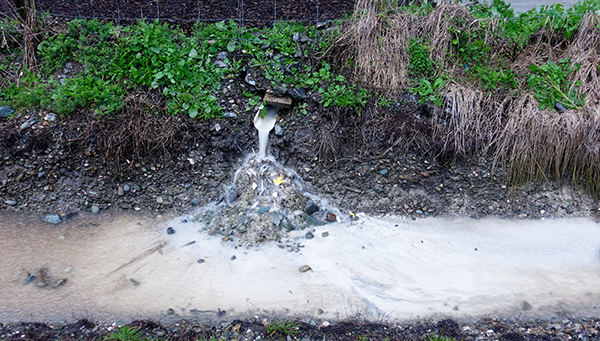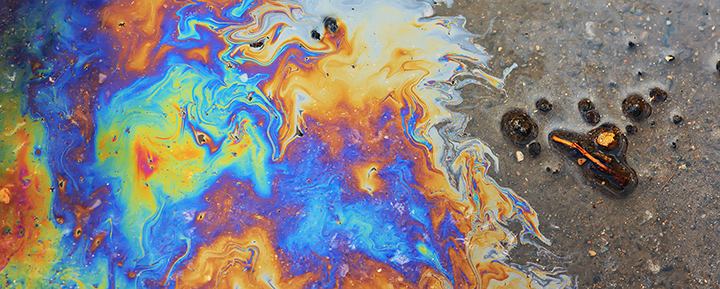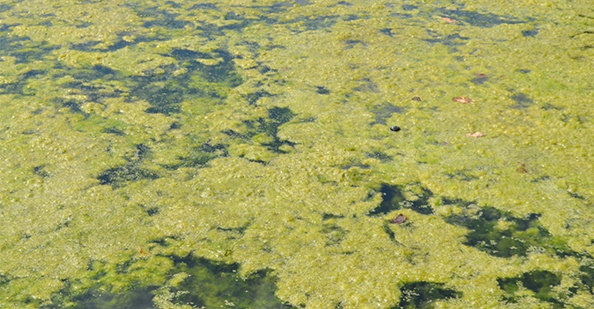P2 Section #3 | Detailing and Car Washes - Pg 2

Section 3 | Detailing and Car Washes
Revised On: March 15 th, 2024 - 9:30 a.m.
Learning Objectives:
- Describe stormwater runoff
- List constituents found in car wash wastewater
- Explain the cause and process of eutrophication
Wastewater and Runoff
In the previous lesson, we explored watersheds and the importance of clean water. This section will teach you about contamination and how it affects water resources. Industrial facilities, commercial businesses, people, and vehicles all release contaminants into the environment. These contaminants enter storm drains and pollute surface waters. Tracking the origin of these substances is difficult, so we must all do our due diligence to ensure hazardous fluids and pollutants are safely managed.

Stormwater runoff is a significant contributor to water pollution in the United States. According to the Environmental Protection Agency (EPA), it causes approximately 30% of known water pollution in the country. Stormwater runoff occurs when rain or melted snow flows over land and impervious surfaces. Examples of impervious surfaces include parking lots, paved streets, sidewalks, and rooftops that prevent water from penetrating the ground or being absorbed by plants. As a result, excess water accumulates, carrying urban pollutants such as oils and grease, heavy metals, and sediments. These pollutants are then directed into nearby storm drains and dry wells or transported directly to a water source. The amount of pollutants washed away on a single block in the city may be small, but runoff becomes a significant issue when you consider just how large cities are. Since this discharge is untreated, the water becomes unfit for fishing, farming, recreation, and drinking. City runoff is complex and challenging to monitor, so we don’t know all the contaminants in our waterways.
Wastewater
Wastewater is a term used to describe water utilized for a particular purpose, resulting in its impurity. This can refer to water contaminated with various pollutants, such as surface runoff from commercial activities. Wastewater is a byproduct of planned water applications and is often characterized by its chemical composition, physical properties, and biological content. Contaminants in wastewater can pose significant environmental and public health risks, making the treatment and disposal of this water a critical concern.

Establishments that offer commercial car washing must prevent runoff from entering storm drains or dry wells, as both are prohibited. Wastewater must be directed to a sanitary sewer system for treatment. Why is this?
Let’s look at common substances found in car wash wastewater and surface runoff:
- Phosphate-based detergents
- Solvents (paints and paint thinners)
- Antifreeze
- Brake fluid and brake lining
- Battery acid
- Motor oils
- Fuels (gasoline, diesel, kerosene)
- Lubricating grease
- Heavy metals
- Debris; sediment
- PFAS
- Residue from exhaust fumes
- Additional substances accumulated from existing pollutants in the environment
While all of these substances are hazardous to human health and the environment, phosphates are especially dangerous. Phosphates are favored for cleaning vehicles because they effectively break down dirt, stains, and grease; however, when these detergents find their way into waterways, they induce considerable damage. High phosphate levels in lakes and rivers lead to the eutrophication of water bodies, causing a chain reaction that leads to algal blooms and dead zones.
Eutrophication

Eutrophication is the over-enrichment of water by nutrients like nitrogen and phosphorus—excessive phosphates from car wash wastewater cause rapid algae growth at the water's surface. As algae accumulates, sunlight can no longer penetrate the water, depriving aquatic life of the necessary resources to survive. The water becomes hypoxic, meaning it is oxygen deficient, killing aquatic life. Long periods of hypoxic waters are called ‘dead zones’ because they exhibit total biodiversity loss. Water degradation can have far-reaching effects, altering wetland ecosystems that exist along the banks of our rivers, and can even degrade drinking water.
Car fluids of all kinds contaminate plankton, which are crucial for aquatic life's survival. Detergents are recognized to kill fish eggs or create abnormalities in adolescent fish, thereby damaging mucous membranes in fish and making them a perfect host for bacteria. These same contaminants can cause adverse effects on humans as well.
Water, vital and scarce, connects all living things in Arizona. Due to the rapid decline of water resources, we must be cautious in managing the quantity and quality of our water supply. Plants, animals, and humans all rely on this shared resource. Commercial washes can threaten our water supply when the resulting waste is not handled correctly. Proper management and proactive measures protect human health and the environment by averting wastewater from entering storm drains, dry wells, and surface waters. This makes it crucial for businesses to remain vigilant in their efforts to mitigate the risks.
Head on over to the next lesson to learn more about wastewater management and the regulatory needs surrounding it.
GUIDES
Implementing P2 > | Spanish >
Inventory Control > | Spanish >
Solvent-Contaminated Wipes >
Used Oil >
Waste Determination >
POSTERS
Clear Walkways > | Spanish >
Clean Workspace > | Spanish >
First-In, First-Out > | Spanish >
Use & Stow > | Spanish >
VIDEOS
Auto Shop Housekeeping>
FIFO for Auto Shops >
What is P2 >
OTHER
P2 in Action >
